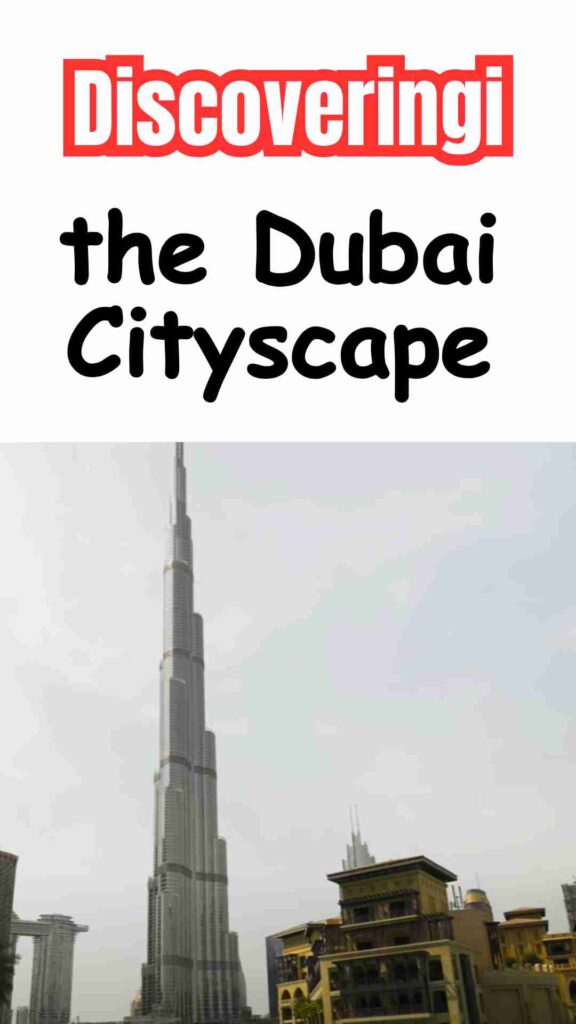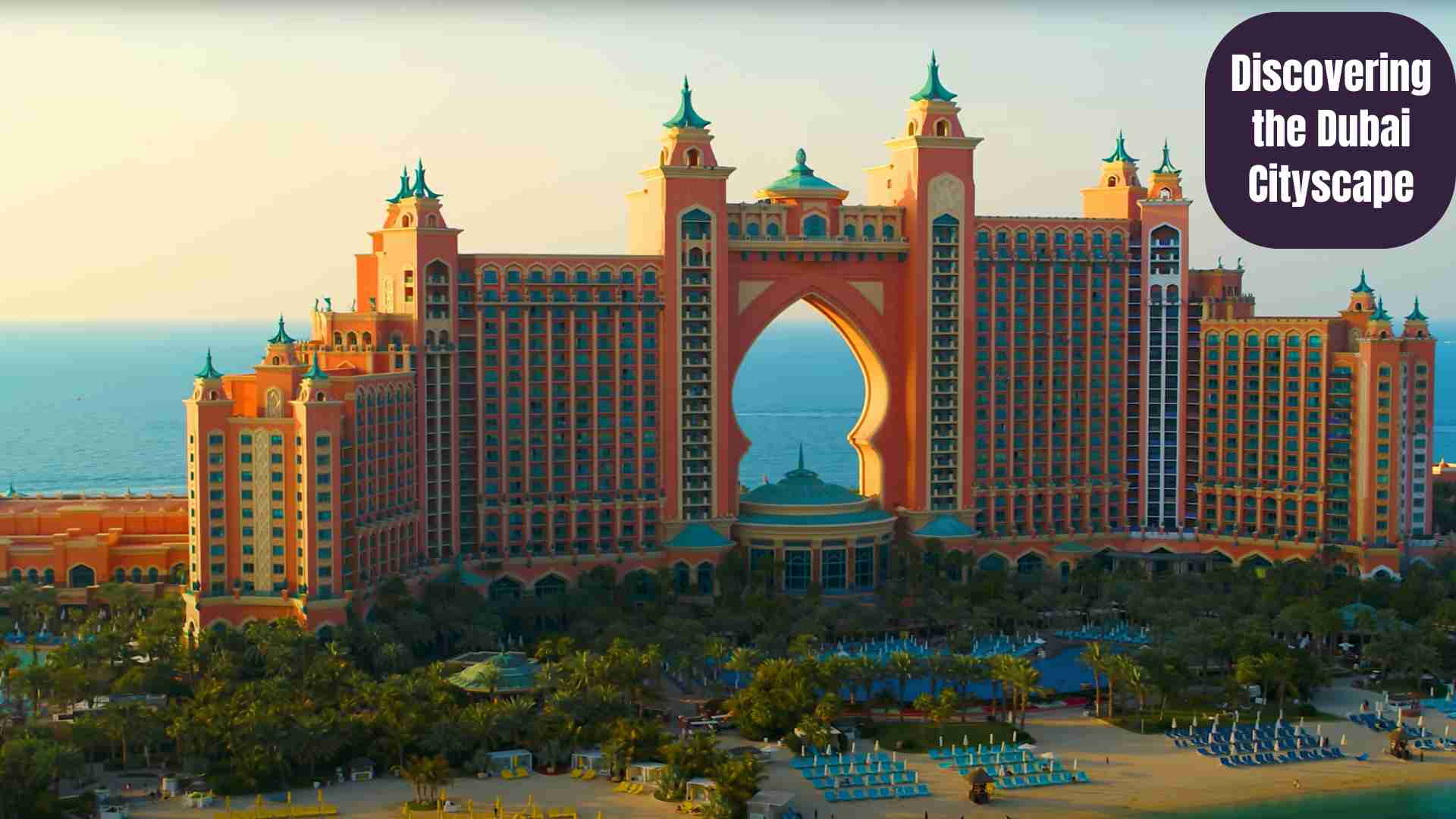If you’ve ever dreamed of a city that looks like it’s straight out of a futuristic movie, then Dubai’s cityscape might just blow your mind. I remember the first time I stood on the Marina Walk, gazing up at the skyscrapers stretching into the clouds, feeling like I was in a place where the future had already arrived. Dubai isn’t just a city; it’s a constantly evolving skyline filled with architectural marvels, glowing lights, and an energy that buzzes day and night.
The Dubai cityscape is a blend of bold designs and impressive heights. From the iconic Burj Khalifa, which proudly holds the title of the tallest building in the world, to the sleek lines of the twisting Cayan Tower, every corner has something to surprise you. It’s like the city tells a story of ambition and creativity, with each building showcasing a unique chapter.
But what makes the cityscape even more captivating is how it changes depending on where you look. By day, the sunlight reflects off the glass facades, giving the whole place a sparkling, clean vibe. By night, the buildings light up in a dazzling array of colors, turning the skyline into a vibrant canvas that feels alive. It’s a sight that’s hard to forget.
As you explore, you’ll notice how Dubai’s cityscape is not just about tall buildings. It’s about the way these structures interact with their surroundings—the desert, the sea, and the wide-open sky. You get this beautiful contrast between nature and urban life, which makes the cityscape feel both grand and welcoming.
The Iconic Landmarks That Define Dubai’s Skyline
When people think of the Dubai cityscape, a few names instantly come to mind. The Burj Khalifa is, of course, the star of the show. Standing at a staggering 828 meters (that’s about 2,717 feet!), it’s not just the tallest building in Dubai—it’s the tallest man-made structure in the world. I still remember the mix of awe and excitement I felt when I took the elevator up to the observation deck. The views are breathtaking, offering a 360-degree panorama of the city, desert, and Persian Gulf.

Then there’s the Burj Al Arab, Dubai’s famous sail-shaped hotel that sits on its own island. It’s not only an architectural marvel but also a symbol of luxury and extravagance. Even if you don’t stay there, seeing it lit up at night against the dark sky is something special. It adds a different kind of charm to the cityscape, blending luxury with design.
Moving along the coastline, the Palm Jumeirah is another impressive sight. This man-made island shaped like a palm tree is home to luxury resorts, villas, and beaches. The aerial view of the Palm alone makes you appreciate Dubai’s ambitious engineering and urban planning. It’s like the city is constantly pushing the limits of what’s possible.
And we can’t forget the twisting Cayan Tower, often called the “Twisting Dragon” for its unique 90-degree spiral design. Walking around the Marina district, this building immediately grabs your attention with its sleek, futuristic look. It’s a great example of how Dubai’s cityscape isn’t just about height—it’s about creative architectural expression.
These landmarks, along with many others, work together to create a cityscape that’s unforgettable. Whether you’re wandering through downtown Dubai or cruising along the waterfront, there’s always something stunning to catch your eye.
Beyond the Buildings: The Urban Vibes and Neighborhoods
Dubai’s cityscape isn’t just about the famous skyscrapers; it’s also shaped by its neighborhoods, each with its own vibe and personality. When you explore areas like Downtown Dubai, you feel the heartbeat of the city. The busy streets are filled with people from all over the world, and the mix of modern malls, parks, and fountains creates a lively urban scene. The Dubai Fountain, right at the foot of the Burj Khalifa, is a favorite spot for locals and visitors alike. Watching those massive water jets dance in sync with music, framed by the towering buildings, is a magical experience.
Then there’s the Dubai Marina, where the cityscape meets the water. Walking along the marina promenade, you get a real sense of how Dubai blends luxury living with outdoor life. The yachts bobbing in the marina, cafés lining the walkway, and the glowing skyscrapers all create a relaxed yet sophisticated atmosphere. It’s a place where the city’s modern ambitions meet everyday enjoyment.
If you head over to Alserkal Avenue, you’ll find a very different side of Dubai’s urban life. This artsy district is home to galleries, creative studios, and quirky cafés. It’s a reminder that the Dubai cityscape isn’t just about glitzy buildings—it also supports culture, innovation, and community. Seeing this mix of old and new, commercial and creative, makes the city feel more human and relatable.
Lastly, the old neighborhoods like Al Fahidi (also known as Al Bastakiya) offer a glimpse into Dubai’s past. Walking through its narrow lanes with traditional wind towers, you’re reminded that Dubai’s modern cityscape grew from humble beginnings. It’s a beautiful contrast to the glass towers elsewhere, and it adds depth to the overall cityscape story.
The Changing Skyline: Dubai’s Growth and Challenges
One of the most fascinating things about the Dubai cityscape is how fast it changes. In just a few years, new towers, bridges, and developments pop up, constantly reshaping the skyline. Walking around the city, you can see cranes and construction sites everywhere. It feels like Dubai is always building its future—sometimes so fast that it’s hard to keep up.
This rapid growth is part of what makes Dubai exciting, but it also comes with challenges. For one, the city has to balance development with sustainability. Tall buildings and big projects consume a lot of energy and resources, so there’s a growing focus on green architecture and eco-friendly designs. Some newer buildings incorporate solar panels, energy-saving systems, and green spaces to help reduce their environmental impact.
Another challenge is preserving the city’s identity amid all this growth. Dubai’s cityscape is impressive, but it can sometimes feel overwhelming or overly commercial. That’s why places like the older neighborhoods and cultural districts are so important—they keep the city’s heritage alive and offer a break from the nonstop urban buzz.
Traffic and crowding are also real issues, especially during peak tourist seasons. The cityscape might look perfect from afar, but on the ground, navigating busy streets or finding parking can test your patience. Still, Dubai’s efficient public transit and metro system help ease the pressure, connecting major areas and letting visitors enjoy the cityscape without the hassle.
Overall, the Dubai cityscape is a work in progress—a dynamic mix of innovation, beauty, and real-world challenges. And that’s part of what makes exploring it so interesting.
Experiencing the Dubai Cityscape: Tips and Takeaways
If you’re planning to explore the Dubai cityscape yourself, here are a few tips that made my experience more enjoyable. First, timing matters a lot. Visiting key spots like the Burj Khalifa or Dubai Marina around sunset lets you see the city bathed in golden light, and then watch as the skyline lights up after dark. It’s a truly magical transition.
Don’t hesitate to explore beyond the famous landmarks. Walk through neighborhoods like Al Fahidi or visit Alserkal Avenue to see the city’s cultural and creative side. These areas give you a fuller picture of Dubai’s personality beyond the skyscrapers.
Also, take advantage of the city’s public transportation. The Dubai Metro is clean, efficient, and offers great views, especially on the elevated lines. It’s an easy way to hop between major parts of the city without the stress of traffic.
One last thing I learned is to keep an open mind. Dubai’s cityscape is not perfect, and it can sometimes feel like a work in progress. But that’s exactly what makes it fascinating—a city that’s bold, constantly changing, and full of surprises.
Whether you’re an architecture enthusiast, a casual traveler, or someone who just loves a good view, Dubai’s cityscape offers something memorable. It’s a place where modern dreams meet the desert sky, and where every glance up is a reminder of human creativity and ambition.


